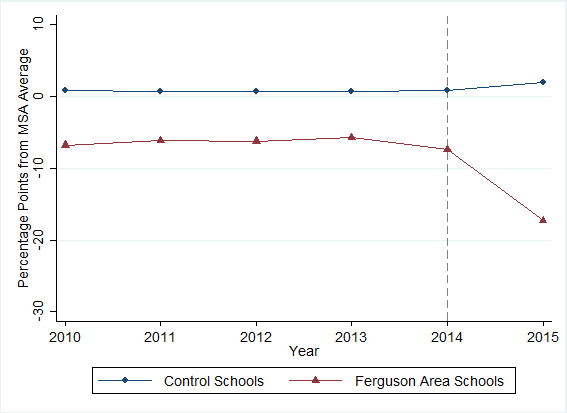In Charts of the Week, a look at some research related to civic health, social bonds, and education.
Americans feel good about their neighbors, but OFTEN DON’T HELP EACH OTHER
Based on AEI’s Survey on Community and Society, Richard Reeves observes that a majority of people like their neighbors and are willing to help them, they are less likely to speak to or help each other often. And, while the “bonding” type of social capital within communities is positive, the “bridging” sort of social capital across different communities is not. In order to promote opportunity and equality, Reeves says, “We need more than ever the kind of social capital that connects less advantaged people to power, resources, and opportunities from which they are otherwise excluded.”
Civic unrest can negatively impact students in the affected area
Though citizens of healthy democracies will protest injustices in their communities, tools of civil disobedience in the long-run can negatively impact the lives of children and students in the affected area, according to Seth Gershenson and Michael Hayes. “[A]n additional cost of civic unrest—disruptions to schools and student learning,” they wrote, “might be borne by a particularly vulnerable subset of historically disadvantaged populations: children.” (This chart shows differences in student achievement between Ferguson-area schools and those in the wider St. Louis area.)

Social studies teachers are more likely to be coaches than other teachers
According to research from Michael Hansen and Diana Quintero, nearly 34 percent of social studies teachers are also coaches—13 percent higher than the next highest groups of teachers (in mathematics) who coach. Despite the large task that social studies teachers have in teaching history and civics, they, broadly, have a large amount of school responsibilities beyond teaching their subject areas. “We thank social studies teachers, along with their colleagues,” Hansen and Quintero wrote, “for playing many varied and important roles in educating our youngest generation.
 Julia O’Hanlon contributed to this post.
Julia O’Hanlon contributed to this post.

Commentary
Charts of the Week: Civic health and education in the US
April 12, 2019